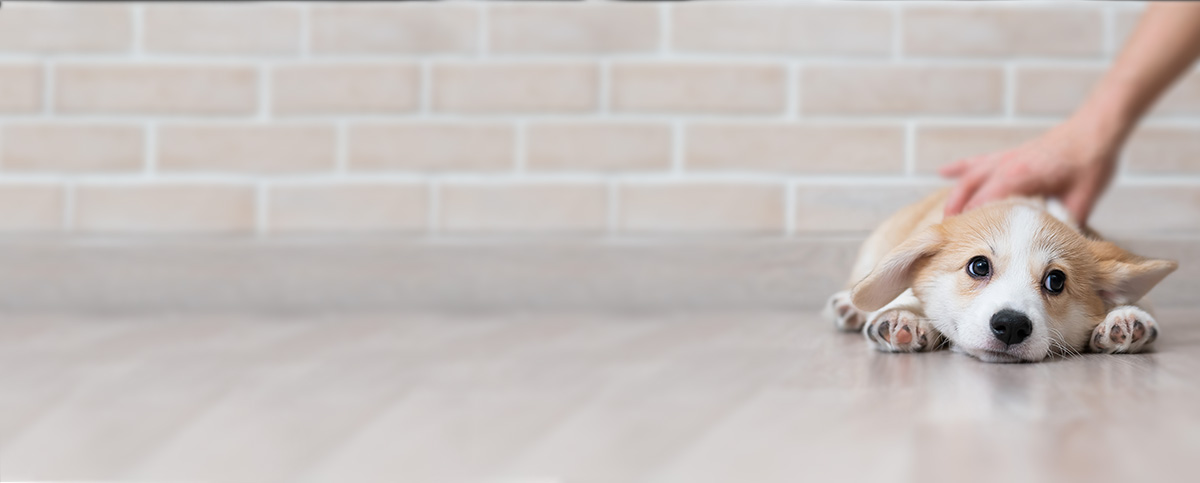Cataracts in Pets
 Dogs and cats have eyes very similar in structure to ours. Like us, they have a lens to help them focus. The lens is normally a clear disc suspended just behind the pupil. When the fibers in the lens are disrupted, the lens appears white or looks like crushed ice, which means it has developed a cataract.
Dogs and cats have eyes very similar in structure to ours. Like us, they have a lens to help them focus. The lens is normally a clear disc suspended just behind the pupil. When the fibers in the lens are disrupted, the lens appears white or looks like crushed ice, which means it has developed a cataract.
Nuclear sclerosis is a slight hazy appearance of the lens that is often mistaken for cataracts. It is a normal aging change that often occurs in both eyes in dogs over 6 years of age. The condition does not significantly affect the vision of the dog and treatment is not recommended.
Cataracts may form for many different reasons, but they all develop when the lens is damaged and extra water moves in, affecting the water/protein balance. If the entire lens is involved, the pet may not be able to see from that eye.
Causes of Cataracts
- Trauma - eye injury, electric shock
- Genetics / inherited - most common cause - some breeds are genetically prone to developing cataracts:
- Afghan Hound, American Cocker Spaniel, Boston Terrier, Chesapeake Bay Retriever, German Shepherd, Golden Retriever, Labrador Retriever, Miniature Schnauzer, Old English Sheepdog, Siberian Husky, Staffordshire Bull Terrier, Standard Poodle, Welsh Springer Spaniel, and West Highland White Terrier
- These dogs should not be used for breeding
- Disease (diabetes in dogs almost always leads to cataracts in both eyes within 1 year)
- Dietary deficiency
- Toxins
Types of Cataracts
- Congenital (present at birth)
- Developmental/Juvenile - these can be inher
- Senile Cataracts - occur in dogs over 6 years of age
Why is it Bad to have a Cataract?
- Cataracts affect vision and can cause blindness if they take up the whole lens
- Cataracts cause inflammation (uveitis) in the eye. This can lead to glaucoma (increased eye pression), pain, and permanent vision loss
- Cataracts can lead to lens luxation, which is when the lens slips out of it's normal location. This is painful and can lead to glaucoma.
Treatment
- The first step is evaluating the pet for causes (bloodwork to screen for diabetes and an exam)
- Primary treatment involves surgical removal of the lens. This is done by a veterinary ophthalmologist and requires careful patient selection. Patients should be in good health and if they are diabetic they should be well controlled.
- If surgery is not done, treatment to preserve eye health is important to prevent uveitis. Daily anti-inflammatories may prevent glaucoma. There are vitamins or anti-oxidants available which can slow cataract formation and have other benefits for eye health. This is available as either a supplement (Ocu-Glo) or an eye gel (Optixcare Eye Health).
- Monitoring your pet for uveitis is very important if they have cataracts. Generally we recommend rechecking monthly for the first few months, then quarterly, then semiannually to evaluate for them for complications.
Resources
Cookies on this website are used to both support the function and performance of the site, and also for marketing purposes, including personalizing content and tailoring advertising to your interests. To manage marketing cookies on this website, please select the button that indicates your preferences. More information can be found in our privacy policy here.


